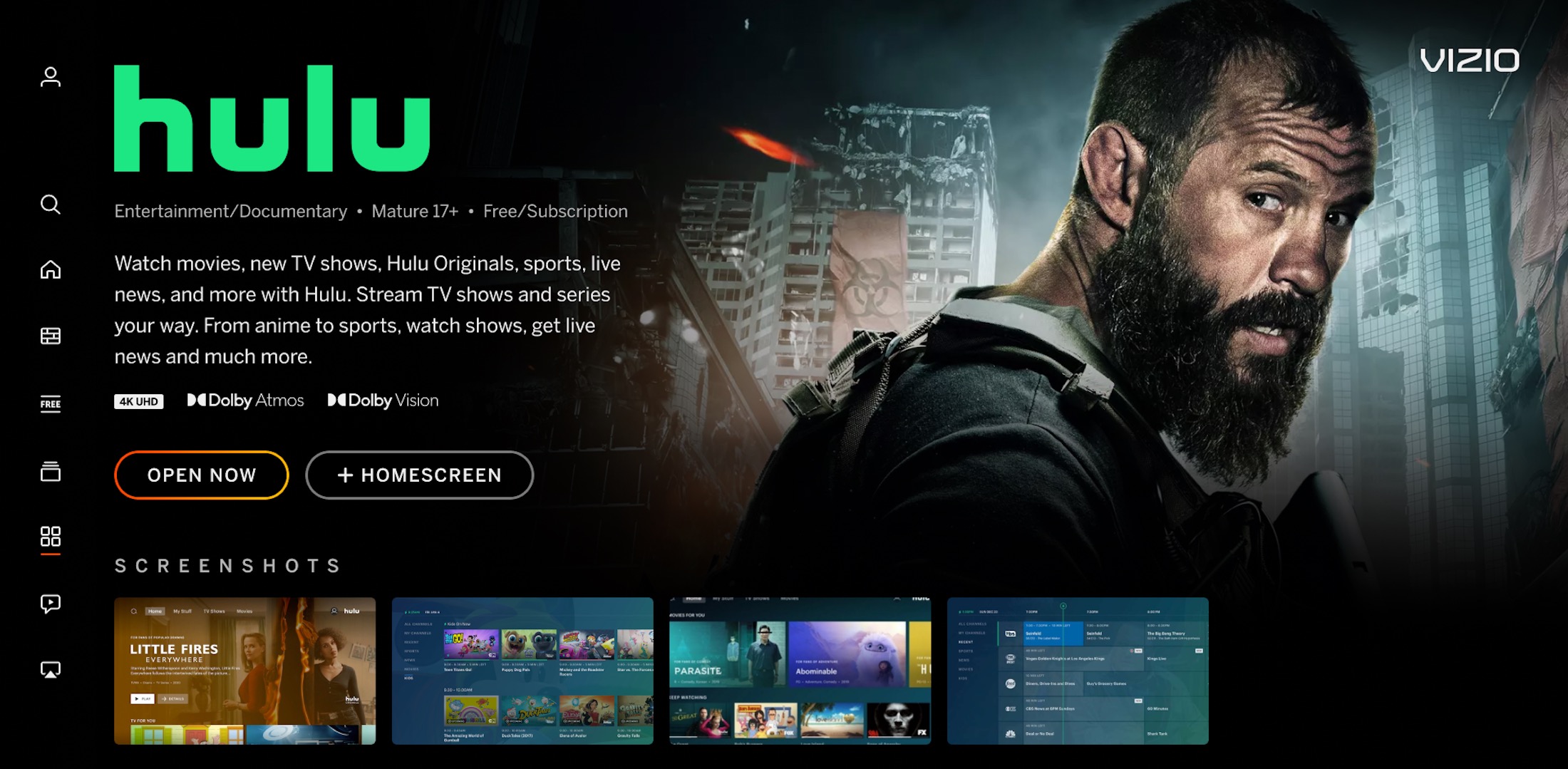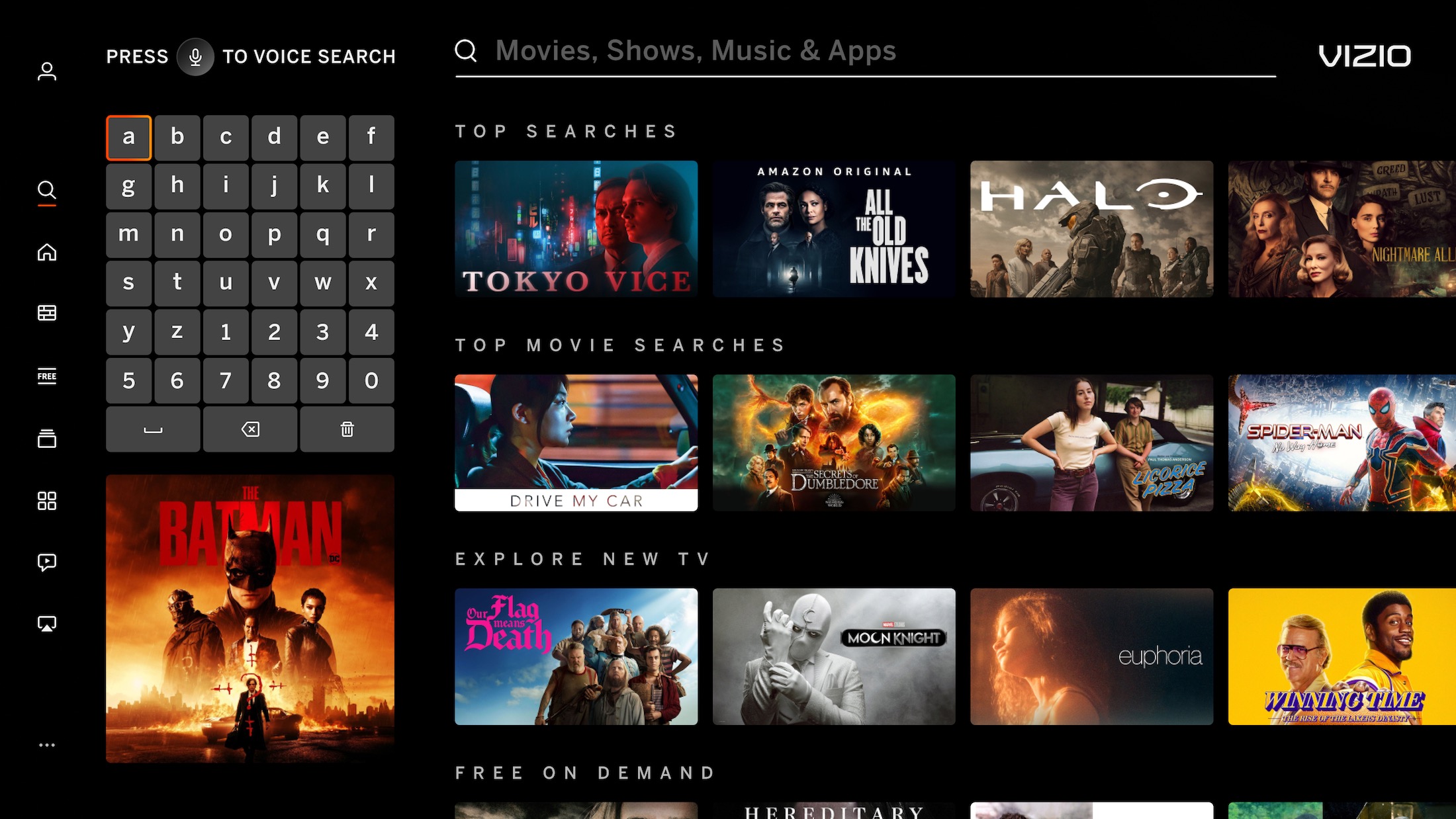I need to be brutally honest here: Vizio has been struggling for a few years now. But there may yet be hope for the television manufacturer. In fact, it’s possible that Vizio could be staging a comeback. And that might be some of the best news yet for consumers.
My first flat-panel TV was a 37-inch Vizio, and there has always been a soft spot in my heart for the brand, which long outpunched its weight class with quality sets that simply weren’t as expensive as you would have expected. So it’s been hard for me to watch Vizio dig itself into a hole for the past few years.
But that’s what happens when you double down on something that doesn’t work. In this case, I’m referring to Vizio’s smart TV operating system, SmartCast. It’s my guess that there may have been stubbornness within the upper ranks at Vizio that kept the company steadfastly dedicated to that system. Unfortunately, I think SmartCast has caused Vizio to suffer as a TV brand.
Remember, Vizio used to be the undisputed value king when it came to TVs. And while it’s managed to earn accolades recently for its soundbars, its TVs have backslid in popularity.
But I sense that things are changing for the better. And while I’ll stop short of saying that I’m excited, I will say that I’m really encouraged. Relieved, even. But, why? What’s changing?
Out with the old
In short: Vizio is finally ditching its SmartCast smart TV platform and replacing it with a brand-new interface. But is that really enough to resuscitate a brand on life support? In this case, I think it just might be.
As I’ve gone back through my Vizio TV reviews over the past few years, there’s definitely a recurring theme of SmartCast being the albatross around Vizio’s otherwise very sturdy neck.

I’ve even gone so far as to suggest that you should bypass SmartCast entirely by using a Roku or Fire TV or Chromecast — anything that’s not SmartCast. That’s … not a great look. Even though SmartCast has gotten better — Vizio managed to reduce lag, increase app loading times, and bolster app support — the layout continued to bother me.
While we’ve come to a point where even though Roku, Google TV, Fire TV, and even Samsung’s Tizen and LG’s webOS all have their differences, there’s a common theme to how you navigate and operate those systems — simple things like menu layout, app layout, and organization. Those essential elements are familiar. SmartCast never really had that. It always felt like it required too much work. And if it is too much work for me — a TV expert — then you can bet it would feel even worse to someone who is new to smart TVs or has gotten used to a competing platform.
Homing in on the problem
I believe Vizio has successfully fixed all of that. Its new interface is simply called Vizio Homescreen. While I might have chosen a different name, I have to admit there’s nothing wrong with that moniker, and, more importantly, it’s a good representation of the experience you get when using it.
There is a menu on the left rail of the home screen. As you scroll through the menu, you get access to what’s contained within each section, which displays across the rest of the screen real estate. There’s a header up top, and then you can scroll deeper down below that. As you make selections, the banner is populated with new graphic content.
It just looks better. It’s a dark interface, the tiles are the right size, and even the font is pleasant. And it feels better to navigate as well. There’s even an on-screen virtual keyboard.
It’s still a full operating system with its own apps, though I haven’t yet been able to dive in deep enough yet to determine how app support looks. Most of the apps you want to access are here, but some questions remain unanswered. I haven’t been able to confirm on an app-by-app basis whether it supports Dolby Atmos, for instance. That was one of the issues I had with SmartCast: new apps were slow to become available on the platform, and when they did, sometimes they weren’t as fully featured. My hope is that aspect improves as well.
Vizio Homescreen is definitely a huge step in the right direction because no matter how good the picture quality, a TV that’s a pain to use will make you not want to use it.
Still, in order for Vizio to stage a comeback, it’s going to have to nail picture quality too. So where is Vizio on that front?
Picture quality
Vizio was doing fairly well in the picture quality department already. I don’t think Vizio has a long row to hoe in terms of making its TVs competitive with TCL and Hisense. But it does need to remain competitive, specifically in the brightness, contrast, and backlight control departments. Those are areas that all TV manufacturers are focusing on, and they are areas that consumers recognize are important, too.
Ultimately, Vizio needs to offer something that TCL and Hisense aren’t.
Vizio’s new batch of TVs needs to offer high brightness — and, historically, they have — with solid black levels. An area that could use a little improvement is backlight control. We need to see mini-LED backlight systems with a high density of backlights, broken down into as many tight little zones as possible. And the backlight control algorithm needs to be snappy so that we don’t see active brightening and darkening on the screen. Vizio can do this — it’s just a question of whether it will.
Vizio’s performance in the areas of color accuracy, color volume, and upscaling already are in a good spot, but one area in which Vizio has an opportunity to school its competition is motion resolution. If Vizio can offer the best motion for the price, then that would be another feather in its cap. Because, ultimately, Vizio needs to offer something that TCL and Hisense aren’t. To me, that space is motion resolution — smooth cinematic content and blur-free sports without soap opera effect. That’s Vizio’s real opportunity for differentiation.
Price and performance
And then, of course, there’s price. Vizio needs to shed any ideas that just because its brand has been in the market longer than TCL and Hisense, it can justify slightly higher prices. It can’t — unless it can offer the best quality control in the midtier market. If Vizio can consistently put out clean screens that produce consistent picture quality, then I suppose Vizio could charge just a bit more because, again, it could point to a real superiority in a specific area in which others struggle.
Otherwise, Vizio needs to meet or beat TCL and Hisense on price-to-performance ratio and features.
And then the final piece? It’s going to need a massive branding campaign that I reckon is going to require some significant spending. TCL has locked down a partnership with the NFL, and Hisense has partnered with the NBA, meaning that those brands’ names are going to be plastered all over two of the biggest sports in the U.S. Vizio is going to need to clap back with something just as impactful, if not even higher-impact.
So to answer the question I posed earlier: Is a new smart TV operating system enough for Vizio to stage a comeback? No. Vizio will need to do more.
But I will say that the new Vizio Homescreen is a huge step in the right direction. With just a few more smart — and probably expensive — moves, Vizio could be the comeback story of the decade.
Editors' Recommendations
- Vizio has new smart TVs and soundbars for 2023, but the best may be yet to come
- How to watch Super Bowl 2022 on a Vizio TV
- Vizio’s entire 2021 TV line-up: Gaming-friendly models start at $250
- Vizio’s $1,300 55-inch OLED TV is a game-changer
- Vizio’s 2021 TV line has new QLEDs with 3,000 nits of eye-searing brightness









